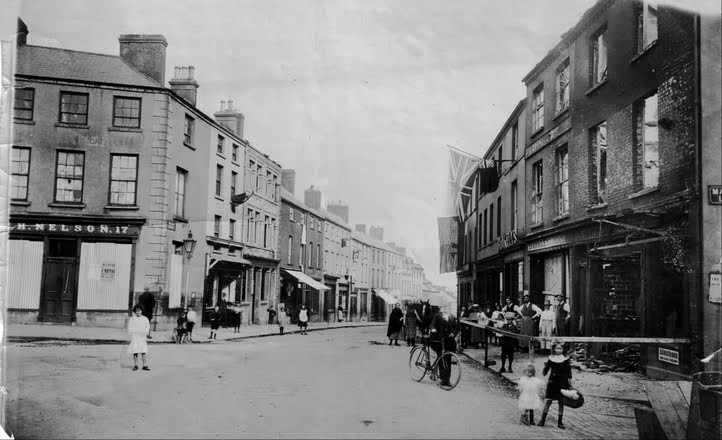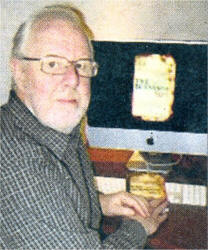
The Burnings 1920
Book throws new light on violence which engulfed Lisburn
by NEIL GREENLEES

 A
METICULOUSLY researched book by a retired Lisburn civil servant throws
new light on the sectarian violence which engulfed the town in the late
summer of 1920 following the murder of RIC District Inspector Oswald
Swanzy by the IRA.
A
METICULOUSLY researched book by a retired Lisburn civil servant throws
new light on the sectarian violence which engulfed the town in the late
summer of 1920 following the murder of RIC District Inspector Oswald
Swanzy by the IRA.
The Burnings 1920' by Pearse Lawlor from Lombard Park explains in detail how the police officer's assassination was ordered by Republican Leader Michael Collins, who believed he was involved in the murder of the Sinn Fein Lord Mayor of Cork Tomas McCurtain, his close friend and confidante.
The book gives one of the most detailed accounts to date of the mayhem in Lisburn which began within hours of the shooting but has not in the past received as much attention from historians as the violence which claimed hundreds of lives in Belfast during the period 1920 to 1922.
The mayhem in Lisburn, which claimed one life - the charred remains in Donaghy's boot factory were never positively identified - has often been viewed as a horrific but spontaneous reaction to the Inspector's murder.
However, Mr. Lawlor presents evidence to indicate it may have been part of a more organised campaign which had also been responsible for violence in Banbridge and Dromore the previous month following the murder by the IRA in Cork of Banbridge man Colonel Gerald Smyth.
 |
 |
| The remains of Donaghy's Boot and Shoe Shop in Market square. | Burned out buildings at Market Square. |
Less severe but equally terrifying rioting occurred in Lisburn at this time.
The August violence, which spread into September, saw business premises and homes belonging to members of the Catholic community burned and looted.
Vicious assaults took place throughout the town and when houses were not actually set alight - often because of a danger to adjoining Protestant dwellings - families had to watch helplessly as their possessions were carried into the street and set on fire.
Violence continued to rage the following day and Catholics - at this stage there were around 1000 families in the parish of Blaris - began to flee to Belfast. Platforms at the town's railway station were crowded
with men, women and children while many from the Low Road area boarded at Hilden. Those who could not afford the train fare started to walk but came under attack at Lambeg and were forced to use mountain roads.

Violence had also flared in Belfast and some of those who left Lisburn found themselves sleeping in St Mary's Hall at Bank Street along with others who had been forced to leave their homes.
Among those affected were leading members of Lisburn's business community as well as many mill workers. The effect of the violence can be judged by the fact only nine people attended Mass at St.
Patrick's Church in Chapel Hill the following Sunday. The church normally recorded congregations totalling 1000 worshippers.
The book contains fascinating details on a number of incidents at locations familiar to anyone with a knowledge of Lisburn.
Many of these descriptions are distressing but in others people can be seen to have demonstrated a great deal of personal courage.
The then Parish Priest of Lisburn Father James O'Boyle, recently arrived in the town from the Parish of Ballymoney, faced down mobs on two occasions. When some rioters managed to slip round a military cordon at the bottom of Chapel Hill and turned their attention to St Patrick's Church they were confronted by the solitary figure of the priest standing at the top of the steps.
Despite the presence of another military guard on the Sacred Heart of Mary Convent in Castle Street the nuns were forced to flee.
A number of the Sisters returned several weeks later and a mob once again gathered outside the building. Father O'Boyle immediately appeared at the doorway and berated them.
He told them they were not true Orangemen and threatened to send for 'principled members' of the Order he had got to know during his time in Ballymoney to put an end to the intimidation of the defenceless sisters. The crowd eventually backed off.
You can read more about the murder of RIC District Inspector Oswald Swanzy
* 'The Burnings 1920' is published by Mercier History. It can be purchased at from the Amazon link in the left column above.
Ulster Star
13/02/2009
